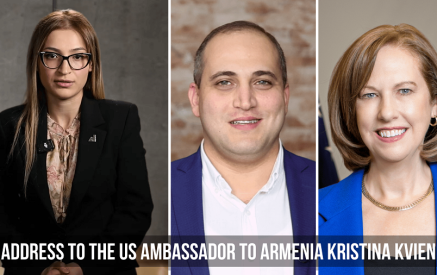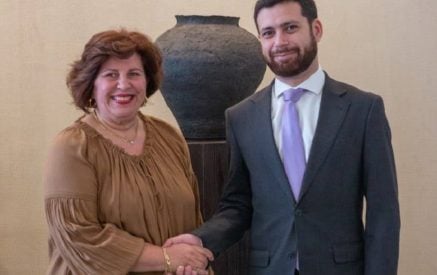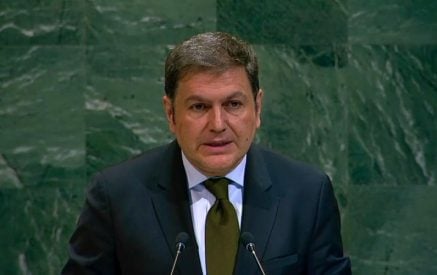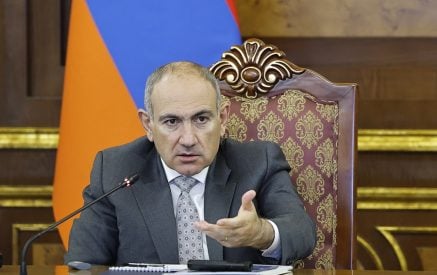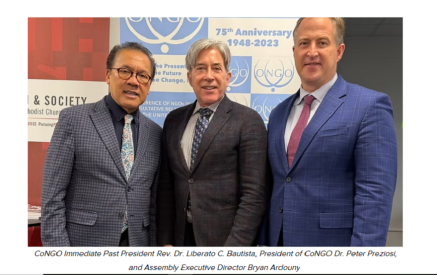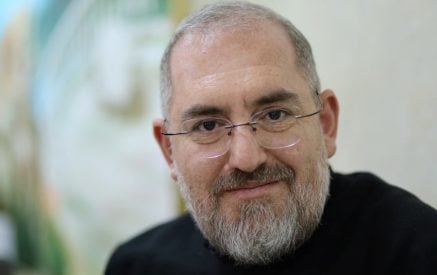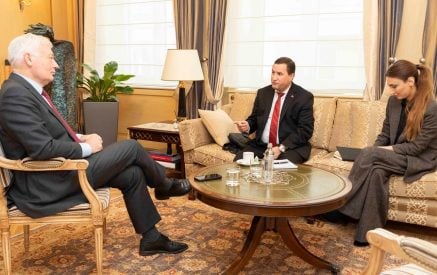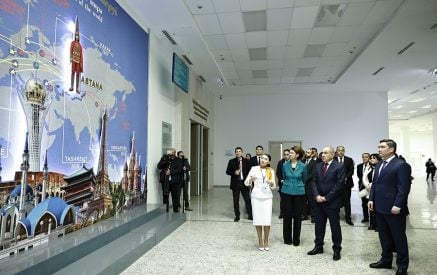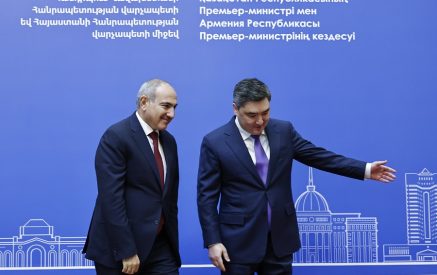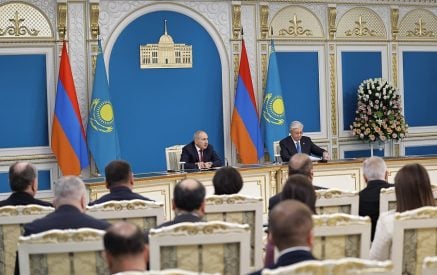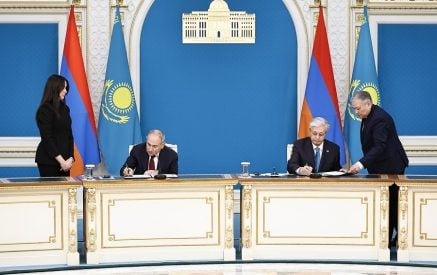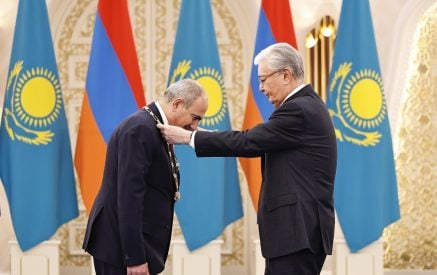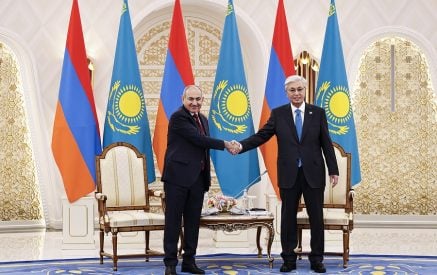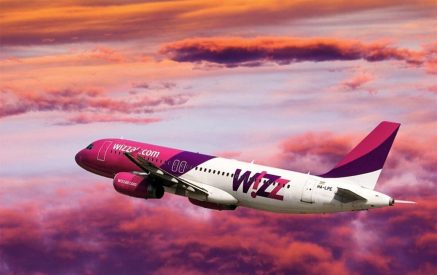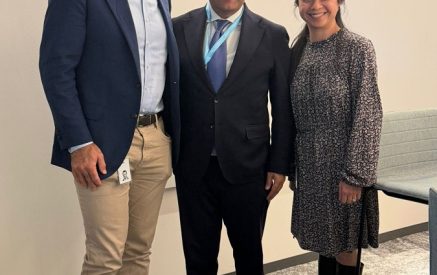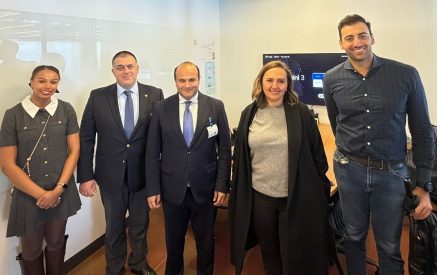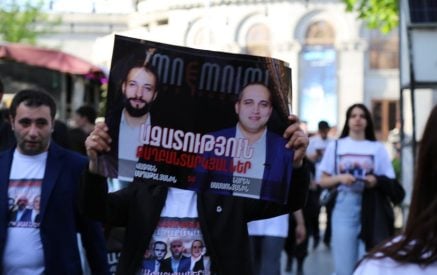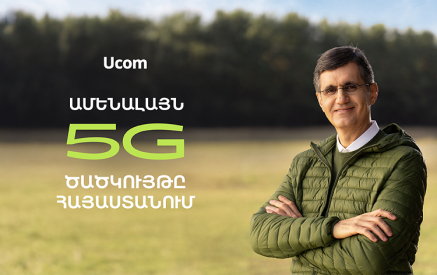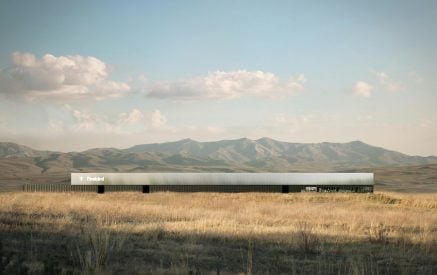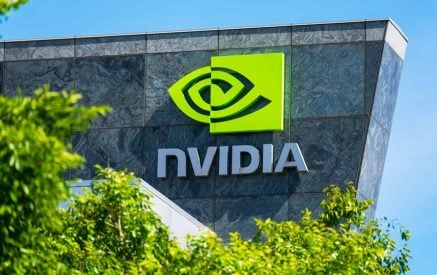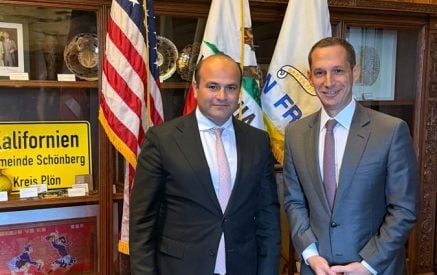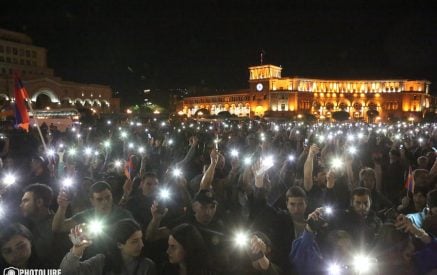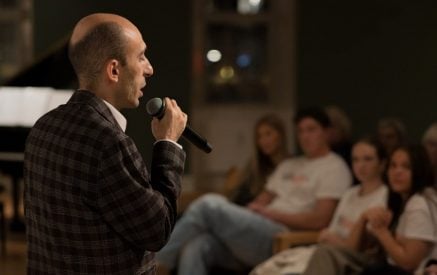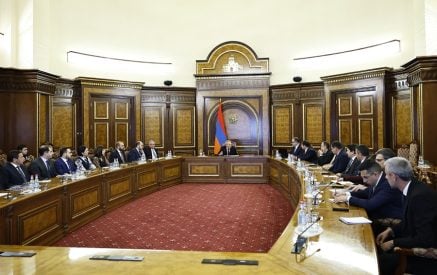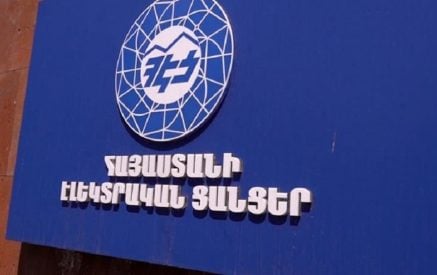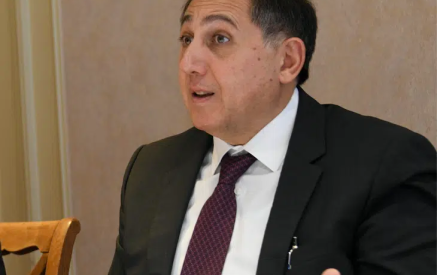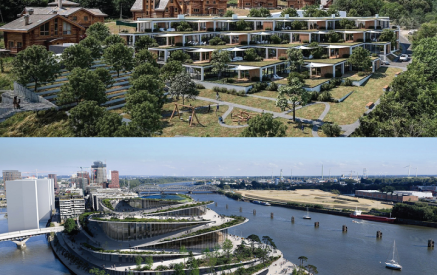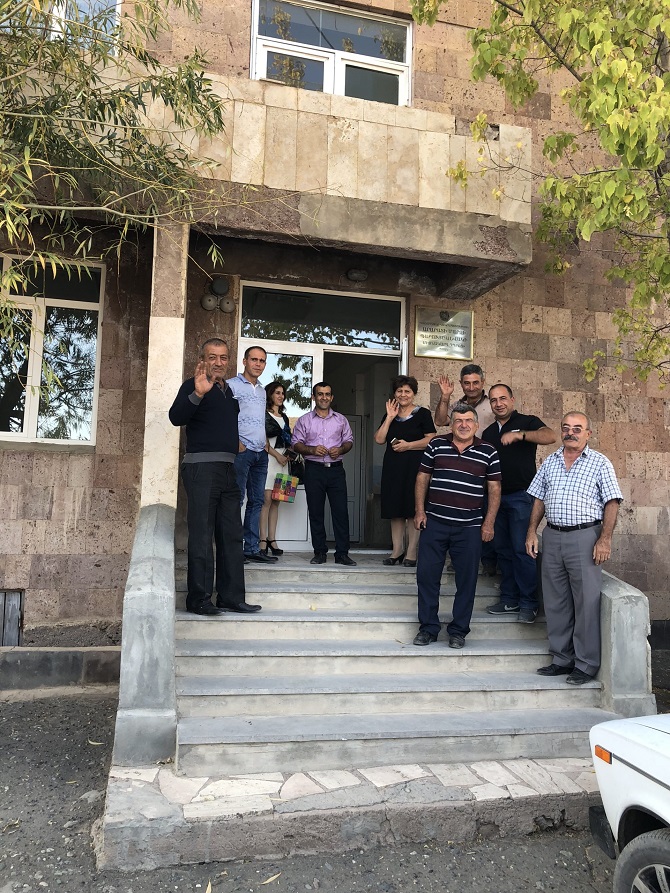The Armenian Weekly. Many of us in America grew up with at least one picture of eternal Ararat on the wall in our family home. Somewhere in the house was a plaque or mosaic of the alphabet Mesrob Mashtots gave us. We dreamed of the day Armenia would be free. Naturally, most of our patriotic fervor was directed towards lost Western Armenia—stolen as a result of the Genocide. After all, most of the Armenians in America were the children and grandchildren of the victims. What remained of Armenia was the territorial footprint of the First Republic, but few from the diaspora had visited due to the political climate under Soviet control. We were grateful to see the words “Armenian S.S.R.” on world maps but lamented the fact that it was not a free nation. I recall in my school years looking for Armenia on world maps but was challenged by others that it was not a “real” nation because its flag was not on the map. It was difficult to describe to them that Armenia had been a nation for thousands of years, when they only lived in the present.
Many of our role model patriots lived their lives on this earth and passed into eternity without seeing a free Armenia. In the 1970s and 80s, we organized rallies and demonstrations calling for a “free Armenia.” It was sincere and from our hearts, but most of the energy was directed at Turkey—the occupier of Western Armenia. During the Cold War, there were calls for the freedom of the “captive nations”—a term used in the west to describe countries like Latvia, Estonia and yes, Armenia. During my college years, I participated in many Hai Tahd conferences around the eastern seaboard.
One in particular remains etched vividly in mind. The plenary session itself is not what I recall, but rather the conversations that took place during the lunch break. This event was held in Watertown at the Agoump, which at that time was truly a club. Our Armenian Youth Federation (AYF) meetings were held in the basement, and lunch was held upstairs where many from our survivor generation would socialize. On this day, we were honored to have a few veteran leaders who served in the administration of the First Republic. One man in particular was a former minister. He was talking about those days to many of us gathered around the table. We were sponges for knowledge and grateful to be in his presence. To our surprise, he declared that soon the “Big Bear will fall,” and we will have our independence in eastern Armenia. This was around 1972. We were stunned by his statement, because it seemed our attention was always focused on Western Armenia, the Armenian Genocide and Turkey. Of course, we were Western Armenians by background and had always been Genocide-focused. He spoke clearly and with conviction to us. He believed that the Soviet system was not sustainable and would collapse under the weight of centralized planning and oppression. A mere 16 years later, the seeds of his prediction began to blossom. By 1991, it was reality. Most of those men and women of that generation never saw that day in September of 1991, but I will never forget the conviction and strength of those who filled the void of patriotic aspiration between 1920 and 1991. Frankly, this is perhaps the greatest accomplishment of the Armenian Revolutionary Federation (ARF) since the fall of the Republic…that it kept the torch of freedom alive in the fabric of the diaspora. Immediately, as the new Republic declared the tri-color of the 1918 Republic its national flag and Mer Hairenik as its anthem, we witnessed a new level of unity in the diaspora. Our focus was less on our differences and more on how to assist the unexpected realization of a sovereign Armenia.
Of course the walls between the diaspora and Armenia began to come down before 1991, especially as a result of the humanitarian needs of the devastating earthquake. But on that glorious fall day on September 21, the aspirations of generations would become reality. The question remained: now what would we do with this freedom? We acted almost like helpless new parents with their first child, happy, but inexperienced. Many philanthropic Armenians and organizations from the diaspora came to Armenia’s aid during its difficult transition to a market economy. Thank God for their benevolence. I would like to focus, however, not on the organizations, but the people themselves. Many have given to these organizations but have not known the people of Armenia in their giving. Armenia remained faceless. That slowly changed as many began to fulfill lifelong dreams to visit the homeland. This is how the now booming tourist industry began. Thousands came over during those first few decades to see, experience and absorb all that Armenia had to offer. Tour companies began exposing the diaspora to the homeland. Initially, many would return saying it was difficult because the dialect, food and several customs were different from the Western villages their parents and grandparents had come from, but Armenia’s bond with the western diaspora has matured over the years. Some of it has been simply getting used to our differences and realizing that our love for Armenia is greater. Of course, the Syrian and Lebanese Armenians have altered the diversity of cuisine and entrepreneurial activity. Suffice it to say that a loving relationship has emerged as both Armenia and the diaspora have experienced positive change.
Read also
But the question remains today: Are we to be merely tourists in the homeland? Is that it? How we connect with Armenia has evolved in the nearly 29 years since its independence. Initially, we in the diaspora were all tourists and for good reasons. There was a bit of a culture shock in visiting as the country was struggling with economic blockades and the Artsakh liberation. It took time for the infrastructure of the country to develop to welcome us. There may have been few western-oriented hotels, but the people of Armenia have always been its greatest asset. Genocide was the shared commonality that accelerated the bond.
Armenia has now taken its place on the world stage. It has gone through the first major recovery of its “post Soviet corruption hangover” and is making huge strides. Yerevan offers the amenities of a European city as the country begins to address its maturity as a democratic society. Armenia is now filled with European, Middle Eastern and Asian tourists. It has become a destination for those seeking its history, architecture, geography and nature. So again I ask. Are we still just tourists? Armenia has a unique responsibility as the manifestation of our ancestral identity. It is the source of who we are. It is the “pilot light” of our civilization. When we travel to Armenia for the first time, we are reconnecting with someone we have read about, but have not met. I have met precious few who, upon visiting the first time, do not wish to return. After our initial visit, we cannot be tourists. We are not the same as those who have no emotional connection to the people and the land. This is ours. It takes time to internalize that, but once the connection is made, we are no longer tourists but ambassadors. When someone stops you on the streets of Yerevan and asks for some information, you answer with pride. When you share your experiences to inspire others, you are not a tourist. It has less to do with how often you are there, but more to do with what you choose to do when you are there. An ambassador is vested in the future of the country.
My first trip to Armenia was thrilling but anxiety-ridden. I was on a fairly unimaginative tour, where we visited countless buildings and monuments. It was important, but contact with the people of Armenia was limited. The tour made me feel walled off from the heart of Armenia. Until I met and worked with the people of Armenia, I felt unfulfilled. We bond with people, not inanimate objects. We treasure the latter, but it is the relationships that build our foundation. Slowly this is changing. I see now that itineraries of tour groups are including more interactions with the people of Armenia. Our young people working at camps, schools, internships and NGOs are setting a marvelous example of how to become vested ambassadors. This will continue to improve as both Armenia and the diaspora continue to engage in working together at individual and small group levels. We need to seek out the abundance we have in common. My wife and I, introduced through the Armenia Tree Project (ATP), have been working with a village on the southern border for some time. The people we have met, who we now call friends, and the experiences of trying to make a difference have had a profound impact on the quality of our lives. We feel a part of the eternal homeland. The first step is to shed the tourist title and promote yourself to ambassador. The unity of the diaspora and Armenia is about building meaningful relationships. All it takes is for you to allow yourself to get involved. Have that conversation with yourself. You will not regret it.


